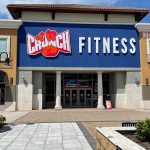Outdoor Industry Association and Piper Jaffray Companies recently concluded their fourth survey of OIA member-company executives in 12 months with respect to their view of current economic prospects, recovery timeline, cost inflation, and the effect of a tighter credit market on near-term business operations. This survey continued to reflect a cautious and realistic picture of the economic situation facing the industry with three key metrics showing improvement sales, inventory and employment.
Nearly all respondents were independent businesses with revenues less than $50 million annually and the majority of respondents identified themselves as either vendors or retailers. The survey noted that overall, retailers are more concerned about the current economic environment than vendors.
The survey illustrated that concern is still significant, but has eased a bit. At the same time, recovery expectations for the next three months are up sharply. In the previous summer survey, 50% of respondents expected revenue increases in the next three months while this most recent report shows 68% of respondents are expecting an increase in revenues.
While much of 2009 was dedicated to reducing inventory levels for retailers, the survey showed that this trend may be ready to reverse. There is an increased desire to take on inventory positions from prior levels as traffic and demand improves at retail. One quarter of all respondents indicated a willingness to increase the inventory position compared to only 17% this past summer and 14% in the spring. In addition, 58% of respondents said they were planning inventory declines this past summer, but only 42% of respondents now say they will be lowering inventory levels.
While drastically reduced inventories did help several retailers weather the recession, this tactic could backfire if consumers are left looking at empty shelves and hangers. However, the analysts at Piper Jaffray still urge caution. The firm said that faster turns of inventory typically improve profitably and returns on invested capital as earnings can remain consistent on a lower level of investment.
Employment indicators are also up. Over the last three months, about one-fifth of respondents indicated employment had decreased. That's significantly more positive than earlier this year when up to 40% said they were expecting employment decreases. Fortunately, respondents' outlook for the future also improved with 29% expecting employment increases versus only 19% in the summer and 18% in the spring.
Not all indicators were positive. The majority reports that there has been no change in access to credit with nearly three-quarters of respondents indicating no change in their ability to access capital, 16% expressing increased access to capital and 12% seeing a decrease in access to capital. While the numbers did not improve materially from the summer survey, they did not get incrementally worse.















